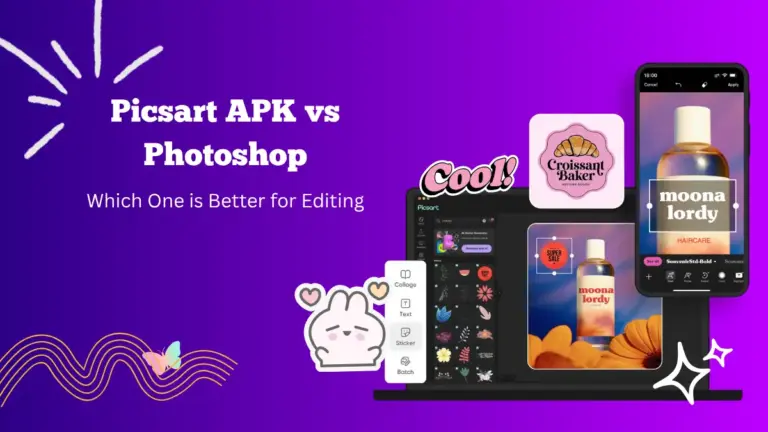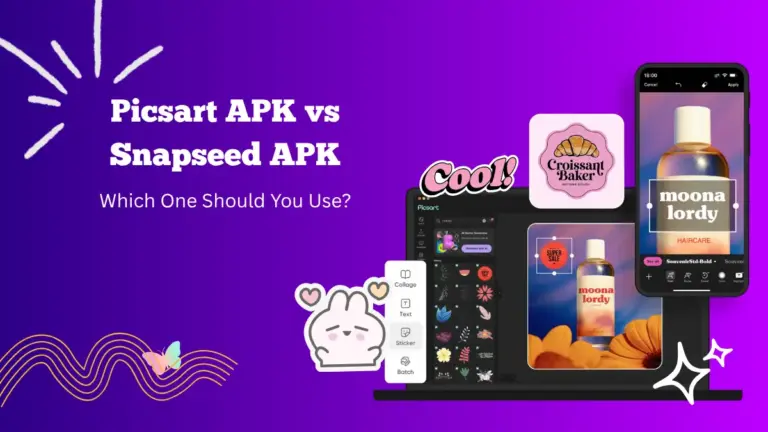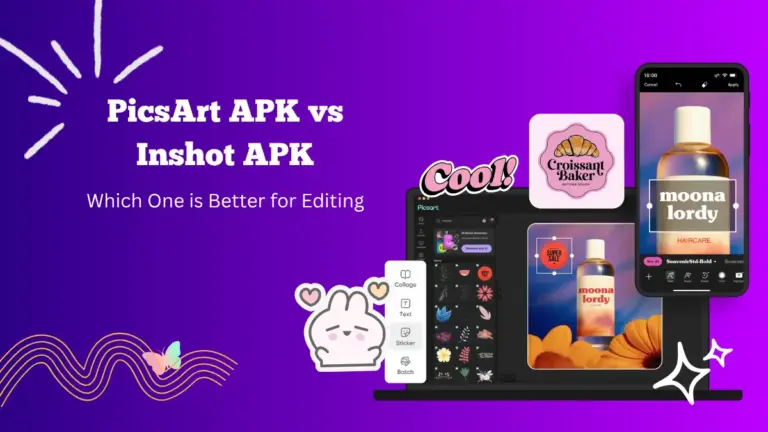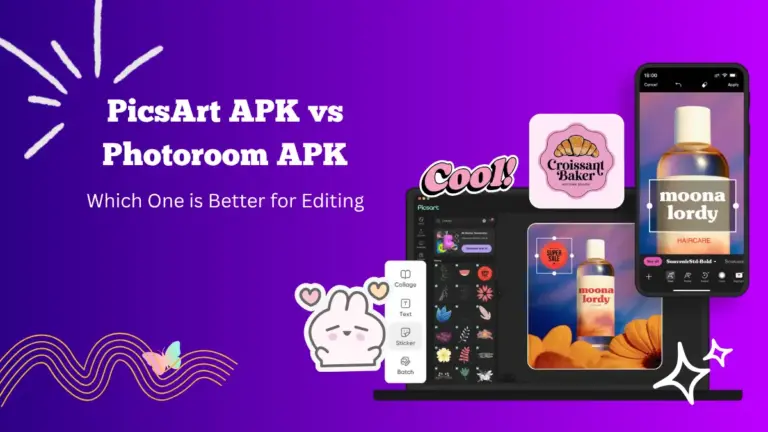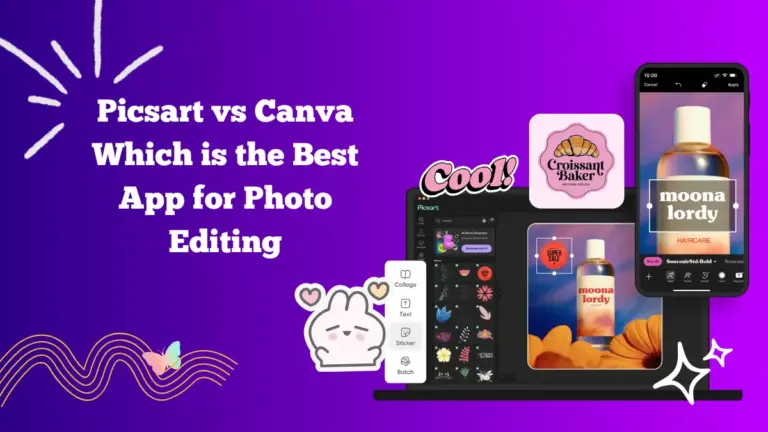Lightroom PicsArt Comparison – Which Is the Best Photo Editing App?

Photo editing has become an important part of our daily lives. From enhancing travel pictures to creating professional-quality content, editing apps have made it possible for anyone to turn an ordinary image into a stunning masterpiece.
Among the most popular names in the world of editing are Adobe Lightroom and PicsArt. Both offer creative tools, filters, and features that can completely transform your photos, but they serve slightly different audiences and editing needs.
So, which one should you choose? This detailed comparison of Lightroom vs PicsArt explores their features, usability, performance, and value to help you decide which app truly fits your editing style.
Lightroom
Adobe Lightroom is a professional photo editing tool developed by Adobe, the company behind Photoshop. It’s known for its precision, control, and photo enhancement capabilities.
Lightroom allows users to adjust lighting, colors, tones, and shadows with remarkable accuracy. It’s widely used by photographers, designers, and content creators who need consistent, high-quality results.
Lightroom provides both desktop and mobile versions, giving editors flexibility to work on different devices. Its cloud storage system also helps in syncing files seamlessly between phone and computer.
Lightroom is often considered the choice for people who value detail, balance, and technical control over their images.
PicsArt
PicsArt is one of the most versatile and creative photo editing apps available on Android, iOS, and PC. It offers a mix of professional tools and playful features, making it suitable for everyone — from beginners to digital artists.
Unlike Lightroom, which focuses on natural photo enhancement, PicsArt is more about creativity, fun, and visual storytelling.
With PicsArt MOD, users can apply filters, stickers, and effects or even create collages and digital artwork. It also includes AI tools, background removers, drawing options, and trendy templates for social media. This makes it a go-to app for users who want both editing and design capabilities in one place.
Interface and Ease of Use
When comparing the interface of both apps, Lightroom feels clean, minimalistic, and organized. The layout focuses on sliders for detailed adjustments. It might seem complex for beginners at first, but once you get used to it, the workflow becomes smooth and professional. Lightroom’s design is built to support photographers who want complete control over exposure, color balance, and clarity. PicsArt, on the other hand, is much more colorful and interactive. It’s designed for creativity and fun. The icons are easy to understand, and users can quickly find tools for filters, effects, text, and stickers. Beginners can start editing within minutes without needing any prior experience. The app also has social features where users can share their creations, follow others, and join challenges. Lightroom provides a rich collection of tools for professional image correction and enhancement. You can: Lightroom’s editing precision is unmatched. The app’s advanced color grading and masking tools make it perfect for users who want natural, clean results. PicsArt offers an entirely different experience. It’s loaded with creative tools like: While PicsArt may not match Lightroom’s professional control, it allows far more creative flexibility. You can create posters, memes, aesthetic edits, or even digital illustrations using just your phone. Lightroom’s filters, also called presets, are designed to enhance photos subtly. You can download or create your own presets to apply a consistent look across multiple images. Many professionals use Lightroom to maintain the same tone and style in their photo collections or social media feeds. The results are realistic and elegant. PicsArt takes a more playful approach. It offers hundreds of filters, effects, and magic styles that transform your photos instantly. You can change a simple picture into a painting, cartoon, or fantasy art with just one tap. The app also provides live effects, so you can preview how your photo will look before saving it. Artificial Intelligence (AI) plays a key role in both apps. Lightroom uses AI to automatically enhance lighting, remove noise, and identify objects for selective edits. It also includes Content-Aware Healing, which can remove unwanted elements seamlessly. PicsArt integrates AI for background replacement, sky changes, face retouching, and AI avatars. You can even generate AI-based images or apply artistic transformations that make your photos look hand-painted. These tools make editing fast and accessible even for beginners. Lightroom runs smoothly on most devices, especially on high-end smartphones and PCs. However, editing RAW files and syncing with the cloud can take more time. It is optimized for precision, so it focuses on maintaining photo quality even with heavy edits. PicsArt is lightweight and faster when applying quick filters and effects. However, using multiple layers or high-resolution effects may slow it down on older devices. For casual edits and social posts, PicsArt performs efficiently. Lightroom is available for Windows, macOS, Android, and iOS. It also supports Adobe Creative Cloud integration, allowing users to access projects across devices. You can start editing on your phone and finish on your computer without losing progress. PicsArt is available on Android, iOS, and PC (through the web or emulator). You can also sync projects using your PicsArt account. However, its desktop version is less advanced compared to Lightroom’s. Lightroom operates on a subscription model. Adobe offers different plans starting from a few dollars per month. The price includes access to Adobe Creative Cloud and storage space. While it may be costly for beginners, the professional features justify the cost for serious photographers. PicsArt follows a freemium model. The basic version is free, but some tools, filters, and stickers are locked behind the PicsArt Gold subscription. The MOD versions available on third-party sites unlock these features for free, allowing users to enjoy premium content without paying. Lightroom focuses on enhancing what’s already captured by the camera. It helps in adjusting tones, improving colors, and achieving a clean, consistent style. It’s ideal for photographers who want to preserve the natural look of their photos. PicsArt encourages creativity beyond photography. You can turn photos into artwork, add graphics, mix videos, or even draw new elements. It’s not just an editing app; it’s a creative platform for digital artists and content creators. Lightroom has a moderate learning curve. Beginners might find it a bit technical at first, but once they learn the basics, it becomes a reliable tool for precise photo control. Adobe also provides tutorials and learning materials for new users. PicsArt is beginner-friendly and includes an interactive community. Users can follow creators, join editing challenges, and share their designs. It inspires creativity and helps users learn new techniques from others. Choosing between Lightroom and PicsArt depends on what you need from a photo editing app. If your goal is to create professional photos with perfect lighting, detailed tones, and consistent styles, then Lightroom is the right choice. It’s designed for photographers and professionals who value precision and control over every aspect of their image. If you want to explore creativity, add effects, stickers, or animations, then PicsArt is the better option. It’s playful, fun, and offers endless design possibilities. PicsArt is also great for social media content creators who want unique, eye-catching visuals. Both apps serve their own purpose beautifully. Lightroom refines your photos with a professional touch, while PicsArt lets your imagination run wild.Editing Tools and Features
Lightroom Features
PicsArt
Filters and Effects
AI and Smart Editing Capabilities
Performance and Speed
Availability and Compatibility
Pricing and Value
Creative Freedom
Learning Curve and Community
Feature
Lightroom
PicsArt
Interface
Clean and professional
Colorful and easy
Editing Tools
Professional-grade
Fun and creative
Filters
Subtle presets
Artistic and vibrant
AI Tools
Smart photo correction
AI art and effects
Price
Subscription-based
Free with optional premium
Best For
Photographers
Social creators and hobbyists
Final Verdict – Which Is Better?




